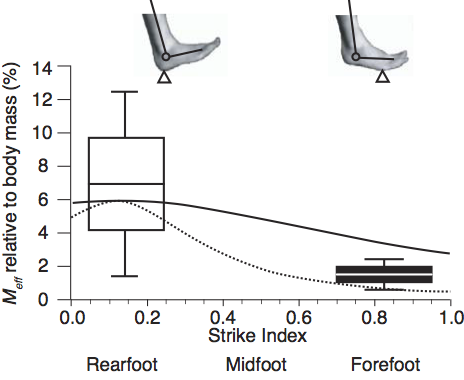The collision at the foot generates a force more than twice the body weight. With more than 500 foot strikes per kilometer, these impacts are postulated to be a major contributor to running injuries that afflict over 30% of endurance runners. But, how did humans run safely before the invention of the modern cushioned running shoe in the 1970s? By comparing habitually barefoot versus habitually shod endurance runners from the USA and also from the Nandi district in Kenya (famous for its endurance runners), we found that the collisional impulse for barefoot runners was four to seven times smaller than for shoe-wearing runners. Using a mathematical model of the collisional mechanics for a runner, we show that foot impacts in the barefoot runners were smaller because they first land on their forefoot (ball of their feet), and also maintain lower ankle stiffness than heel strikers. This study has prompted an investigation in my group, and others, on the role of compliance in the leg and the foot for stability on rough terrains. Besides implications for the shoe industry, our work affects future studies on the biomechanics of human running, and raises questions about the role of feet in humans, animals, robots and prostheses.
Related ongoing projects in the lab include:
- The evolution and function of arches in the feet.
- Mechanics and control of fish fins.
- Relationship between shape and function of leaves and flowers.
